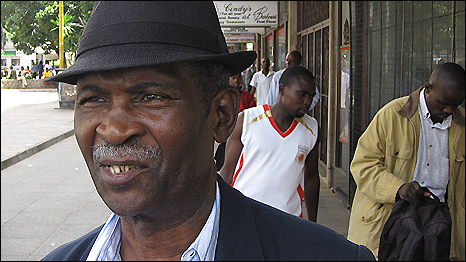By Bill Saidi
There has been a long argument about how to tell “the real Zimbabwe” story. According to people who style themselves as patriots, the story does not include the 20 000 people killed during the mindless carnage that was Gukurahundi.

It doesn’t even include a pronouncement by a VVIP that the people of what was called, before independence, Harare township, “are without totems.”
In terms of real Zimbabwean cultural mores, these are people of a very low class. For one thing, they cannot be called Zimbabweans — because they have no totems.
For another, they might often be described as “aliens”, although they were born in the country.
To explain what a totem is to the uninitiated is a problem. Let us say that a totem is something you are called when you are a “genuine” Zimbabwean, although such a creature might defy real classification.
Your totem could be “Shumba” or “Mazvimbakupa.”
But if your surname is Banda, Chirwa or Sondo, you are unlikely to have a totem. If you were born in Zimbabwe you are still a Zimbabwean, but you have no totem.
There are many such people all over the country, including those in what is now called Mbare, in which I grew up in the 30’s.
To respond to the aforementioned VVIP’s insult, the voters of Harare have routinely voted against the party which he has led for donkey’s years.
There are other low-class residential areas in which most of the residents are likely to be the offspring of immigrants who came to this country to seek their fortune on the mines and farms of Gwelo, Que Que and Shabani — now Gweru, Kwekwe and Zvishavane respectively.
The real Zimbabwe story must include how one political party tried to impose a one-party system, in spite of its well-known pitfalls — a dictatorship in which a majority of the people has little say in how the country is run.
By 2000, 20 years after independence, the spine of the one-party system was broken by a former trade unionist named Morgan Tsvangirai.
His party, the Movement for Democratic Change (MDC), won 57 seats in its first election bid.
By 2008, it had won enough seats in Parliament to force the then ruling party to include it in a coalition government.
Even in an election in which the goalposts were maliciously uneven, the MDC still managed to win seats in Parliament, but not enough to be invited to form a coalition with the “patiyeropa” (the party of bloodshed).
Any objective commentator reading all this would conclude that the “real Zimbabwe story” is not a very pretty story. They would conclude that the stench of skulduggery is so strong that only an idiot would give it a clean bill of authenticity.
Among some genuine Zimbabweans of my acquaintance — people with totems and steeped in superstition — the rickety state of our economy and the upheavals in the ruling party are a direct result of the unholy pretence by officialdom that our path after independence was unscathed by scandal and massive thievery of State funds.
This “big lie” has provoked the invisible forces which guide our destiny into wreaking vengeance on its perpetrators.
Never mind that this could be a lot of mumbo-jumbo nonsense. The truth is that our “real story” is studded with untruths.
The truth of the sinking of Zimbabwe into its current level of political and economic mediocrity must be told without frills. The price of falsifying it has been very high: we must know that by now.
Bill Saidi is a veteran Zimbabwean journalist. This article was first published by the Daily News






